Coloring your hair is a widely adopted method to enhance your appearance and distinguish yourself, regardless of whether you are a man or a woman. Once you have visited a salon and invested in a hair coloring treatment, it becomes crucial to maintain proper care for your hair to ensure that the color remains vibrant and lasts as long as possible. Regardless of whether you opted for blonde, brunette, red, silver, denim blue, green, or purple hair, it is essential to follow a set of helpful guidelines to preserve the brilliance of the color and promote the overall health of your hair. Below our artical, you will find a compilation of useful tips that will help you prolong the vibrancy of your hair color while ensuring the well being of your hair:
Let’s examine the structure of your hair coloring
Deep within each individual strand of hair lies the medulla, forming the central core. Surrounding the medulla is the cortex, a vital layer that gives the hair its strength and elasticity. Protecting the cortex is the outer cuticle, a thin, transparent layer composed of overlapping scales. Together, these three layers make up the intricate anatomy of your hair. The health and integrity of these layers play a crucial role in determining the overall strength and resilience of your hair. When all three layers are intact and in good condition, your hair tends to be strong and less prone to damage. However, any damage or disruption to these layers can lead to various hair issues such as breakage, frizz, or dullness.
Moving beyond the structure, the natural color of your hair is determined by a pigment known as melanin. Melanin comes in different forms and is responsible for the variety of hair colors we observe. Eumelanin, a dark pigment is responsible for black and brown hair. The amount of eumelanin present in your hair determines the depth and darkness of the color. Those with higher concentrations of eumelanin will typically have black hair, while moderate amounts result in shades of brown. On the other hand, individuals with lower levels of eumelanin tend to have lighter hair, ranging from various shades of brown to blonde.
In contrast, red hair is primarily caused by the presence of a different pigment called pheomelanin. This pigment, combined with a small amount of eumelanin, produces the distinctive red hue. The specific combination and ratio of these pigments contribute to the unique color variations observed in different individuals. When you opt for color treatments or hair dyes, these products work by penetrating the outer cuticle layer and accessing the cortex. By opening up the molecular structure of the cuticle, the synthetic dye molecules can enter the cortex and modify the natural pigment of your hair. The new color takes its place, resulting in a noticeable change in appearance.
However, it is important to note that when the outer cuticle is penetrated during the coloring process, it can disrupt the natural balance of your hair. This disruption inhibits the usual flow of sebum, the natural oil produced by your scalp, along the hair shaft. As a result, your hair may experience dryness and brittleness. The lack of natural oils can also lead to a loss of shine and luster, making your colored hair appear dull and lifeless.
It is crucial to prioritize extra care and attention for your hair after undergoing any form of color treatment. This includes adopting a regular hair care routine that focuses on nourishment, hydration, and protection. Using specialized products designed for color treated hair, such as color safe shampoos, conditioners, and hair masks, can help restore moisture and maintain the vibrancy of your newly colored hair. Additionally, incorporating deep conditioning treatments, oil based serums, and heat protectants can provide further nourishment and protection against potential damage caused by styling tools and environmental factors.
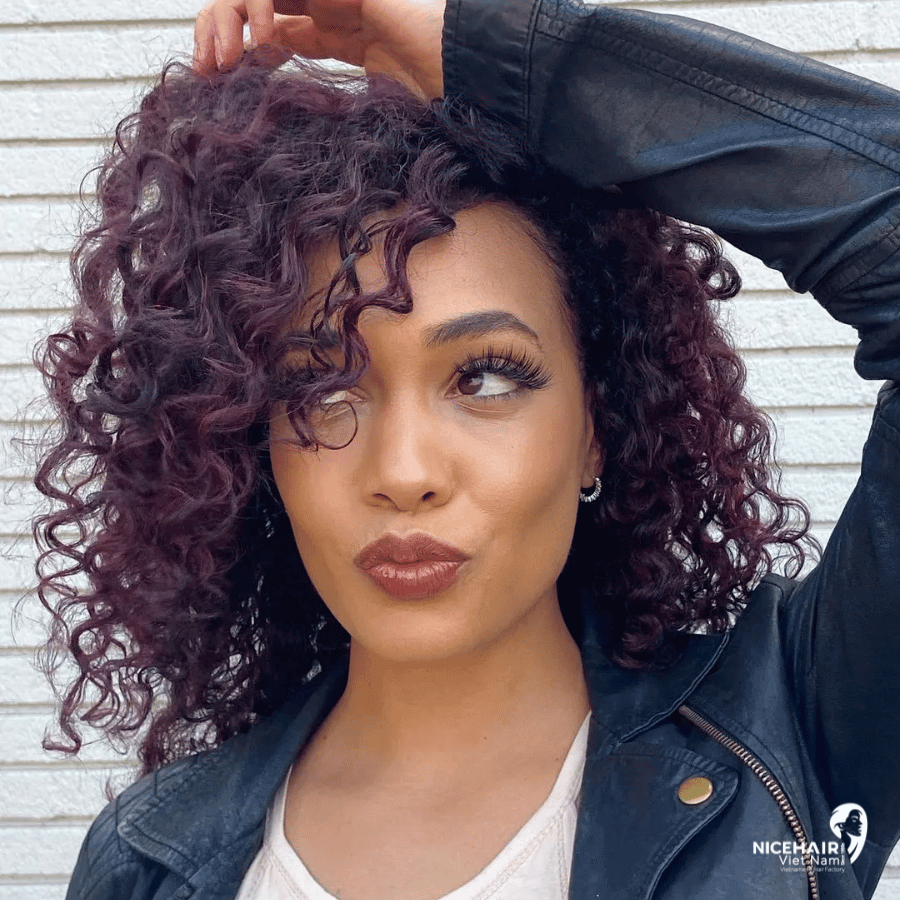
Sustaining the health of dyed hair
Listed below are a range of techniques that can be implemented to reinforce and optimize the vitality of your hair subsequent to color treatments, thereby significantly prolonging the enduring vibrancy of your chosen hue while simultaneously fostering comprehensive hair wellness.
Apply a protein-enriched gel before coloring your hair
When you decide to color your hair, it exposes the strands to potential damage and brittleness. However, there are steps you can take to fortify your hair and reduce its porosity before undergoing the coloring treatment. By doing so, you create an optimal environment for the pigment to bond effectively with the hair strands. It is crucial to prioritize the health of your hair prior to coloring.
One effective method to prepare your hair for coloring is by using protein infused treatments specifically designed for pre-coloring purposes. These treatments contain proteins that can help strengthen and nourish the hair, enhancing its overall condition and resilience. The protein infusion works to fill in any gaps or weaknesses in the hair shaft, reducing porosity and creating a smoother surface for the color to adhere to. Incorporating a protein infused shampoo into your pre-coloring routine, you provide your hair with the necessary nutrients and support to withstand the coloring process. This not only improves the outcome of the color but also helps minimize potential damage caused by the chemical process. Additionally, protein infused treatments can help restore any lost moisture and maintain the hair’s natural balance, promoting optimal hair health.
When searching for the right shampoo, look for products specifically formulated for color treated hair. These shampoos are specially designed to cater to the unique needs of colored hair, providing gentle cleansing while preserving the vibrancy of the color. They often contain ingredients that help prolong the life of the color, prevent fading and maintain the overall health of the hair.
Utilize a specifically formulated shampoo for hair
Once you have completed the coloring process for your hair, it is crucial to adopt a hair care routine that includes the use of sulfate free conditioning cleansers and shampoos. Sulfates, commonly found in many hair care products, can strip away the natural moisture from your hair, resulting in a brittle and dry texture. This dryness poses a risk to the longevity of your color, as the added pigment is more prone to escaping and fading.
You provide your colored hair with a gentler cleansing experience that helps preserve its moisture balance by opting for sulfate free conditioning cleansers and shampoos. These sulfate free formulas are specifically designed to cleanse without stripping away the natural oils that keep your hair hydrated and healthy. The absence of sulfates allows the color treated hair to retain its essential moisture, preventing it from becoming brittle and dry. When your hair retains its moisture, the color pigment remains trapped within the hair shaft, enhancing the longevity of your coloring. On the other hand, when your hair becomes dry, the pigment molecules are more likely to escape, resulting in a faded appearance and diminished color vibrancy.
Choosing sulfate free conditioning cleansers and shampoos for color treated hair helps maintain the integrity of your hair’s moisture barrier. These products typically contain nourishing ingredients that replenish and hydrate the hair, ensuring it remains supple and vibrant. By preserving the moisture in your hair, the color remains locked in, allowing you to enjoy the full benefits of your chosen shade for an extended period.
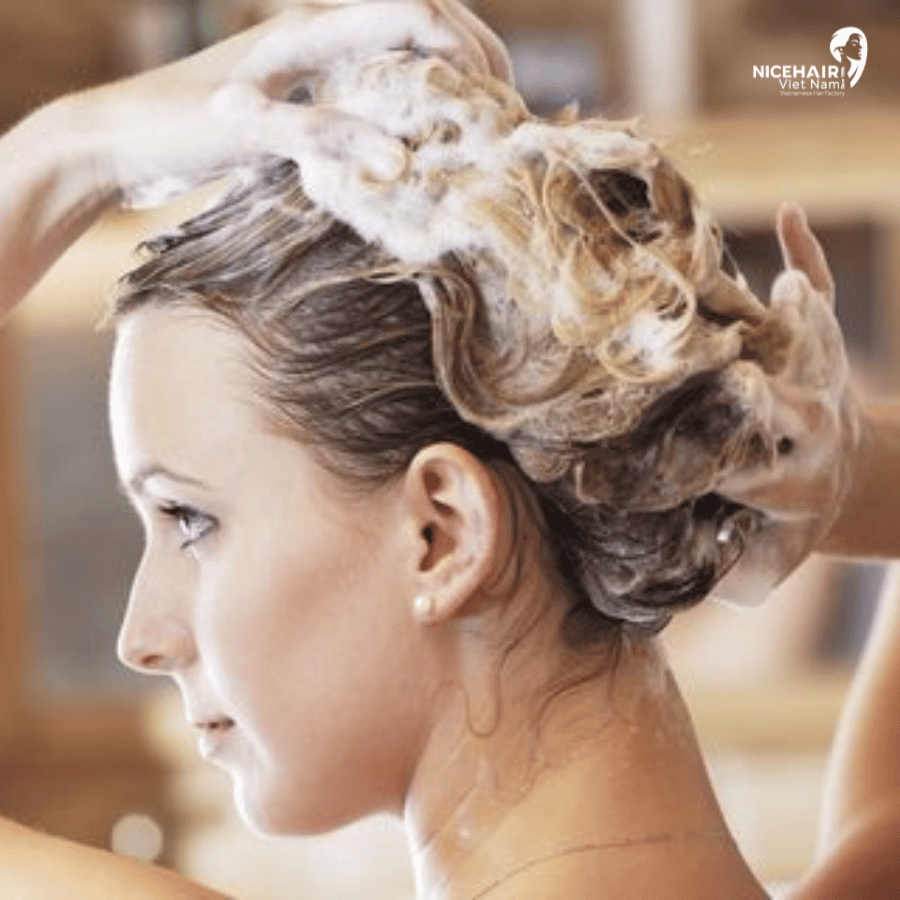
Reduce the frequency of washing your hair
After coloring your hair, it is recommended to limit the frequency of washing to no more than 2 to 3 times a week. When you wash your hair, the process involves the removal of natural oils that act as a protective barrier for your hair follicles. Preserving these oils is crucial for maintaining the luster and glossy appearance of your hair. The oils produced by your scalp play a vital role in preventing your hair from becoming brittle and dry.
By washing your hair less frequently, you allow the natural oils to remain on your scalp and distribute down the hair shafts, providing nourishment and hydration to your strands. These oils act as a natural conditioner, keeping your hair soft, supple, and healthy-looking. They also help in retaining moisture within the hair, preventing it from drying out and becoming prone to breakage. When you excessively wash your hair, especially after coloring, you risk stripping away the protective oils, leading to dryness and a loss of vibrancy in your color. By reducing the frequency of washing, you give your hair a chance to benefit from its natural oils and maintain its optimal condition.
However, it’s important to note that everyone’s hair is unique, and the ideal washing frequency may vary depending on factors such as hair type, scalp condition, and personal preference. It’s essential to find the balance that works best for you and your hair. Observing the condition of your scalp and the overall health of your hair can help determine how often you should wash it.
Incorporate the use of purple or blue shampoo to maintain color balance
If you have naturally brown, black, or red hair and have opted to color your hair in shades of silver, platinum, or blonde, incorporating a purple shampoo into your hair care routine can be highly beneficial. Purple shampoo is specifically formulated to combat brassiness and preserve the desired blondish luster in colored hair. When selecting a purple shampoo, it is advisable to choose one that is sulfate free and composed of natural ingredients. It is not necessary to use purple shampoo every time you wash your hair; rather, incorporating it into your routine once every week or two should suffice. It is essential to strike a balance and avoid overusing purple shampoo, as excessive use may lead to an unwanted accumulation of purple pigment in your hair.
On the other hand, if you have dyed your hair brunette and notice excessive red tones, utilizing a blue shampoo can help rectify the pigment and eliminate brassy tones. Blue shampoos are specifically designed for color correcting brunette hair by neutralizing unwanted warmth. Similar to purple shampoos, it is vital to select a sulfate-free option when choosing a blue shampoo.
In both cases, using shampoos without sulfates is highly recommended. Sulfates can strip away the natural oils and moisture from your hair, which can be particularly detrimental to colored hair. Opting for sulfate free formulas helps maintain the integrity of your color while keeping your hair healthy and nourished.

Adjust the temperature of your shower to a cooler setting
When washing and rinsing your hair, it is advisable to use cold or lukewarm water, focusing primarily on the roots and scalp. This temperature range aids in sealing the cuticle, which is beneficial for preserving the color in your dyed hair. Hot water on the other hand can accelerate color bleeding and fading. By opting for colder or lukewarm water, you minimize the risk of color molecules escaping from the hair shaft. The lower temperature helps to keep the cuticle layer of your hair smooth and closed, preventing color molecules from leaching out and maintaining the vibrancy of your dyed hair.
Specifically focusing the water on the roots and scalp allows you to effectively cleanse the area where oil and product buildup are most concentrated, without subjecting the lengths and ends of your hair to excessive water exposure. This targeted approach helps minimize color fading while still ensuring proper cleanliness.
It’s important to note that while cold or lukewarm water is recommended for washing and rinsing, using warm water for deep conditioning treatments can be beneficial. Warm water opens the hair cuticles, allowing the conditioning ingredients to penetrate deeply and provide intense nourishment to the hair strands. After the deep conditioning treatment, remember to rinse with cooler water to seal the cuticle and retain the benefits of the treatment.
Make it a regular practice to deep condition your hair
Safeguarding your hair follicles is paramount in maintaining the health and longevity of your color-treated hair. Utilizing deep conditioners, leave-in conditioners, or indulging in occasional hot oil treatments can be immensely beneficial in protecting your hair and preventing color fading. It is advisable to seek out conditioners specifically formulated for color treated hair, as they are designed to cater to the unique needs of colored hair.
Deep conditioners play a vital role in nourishing and replenishing your hair, providing much needed moisture and nutrients that may have been lost during the coloring process. These intensive treatments work to repair and strengthen the hair shaft, enhancing its resilience and preventing breakage. By fortifying your hair with deep conditioners, you create a protective barrier that shields your hair follicles from external stressors, such as heat styling, pollution and UV rays which can lead to color fading.
Leave in conditioners serve as a daily defense mechanism for your hair. They provide ongoing moisture, hydration, and protection throughout the day, keeping your hair nourished and shielded from environmental damage. Leave in conditioners also help in detangling and managing your hair, reducing friction and minimizing the risk of breakage. By incorporating a leave in conditioner into your hair care routine, you effectively safeguard your color treated hair, promoting its health and vibrancy.
Hot oil treatments offer a luxurious and rejuvenating experience for your hair. These treatments involve applying heated oils such as coconut oil, argan oil or olive oil, to your hair and scalp. The warmth of the oil opens the hair cuticles, allowing the nourishing properties of the oil to penetrate deeply, moisturizing and strengthening the hair from within. Hot oil treatments not only enhance the overall condition of your hair but also help in preserving the color by providing an extra layer of protection.
When selecting conditioners for your color treated hair, opt for products specifically formulated for this purpose. These conditioners are carefully crafted with ingredients that address the unique needs of colored hair, such as color locking agents and UV filters. They work in synergy with your hair’s natural structure and the coloring process to maintain the vibrancy and integrity of your chosen shade.
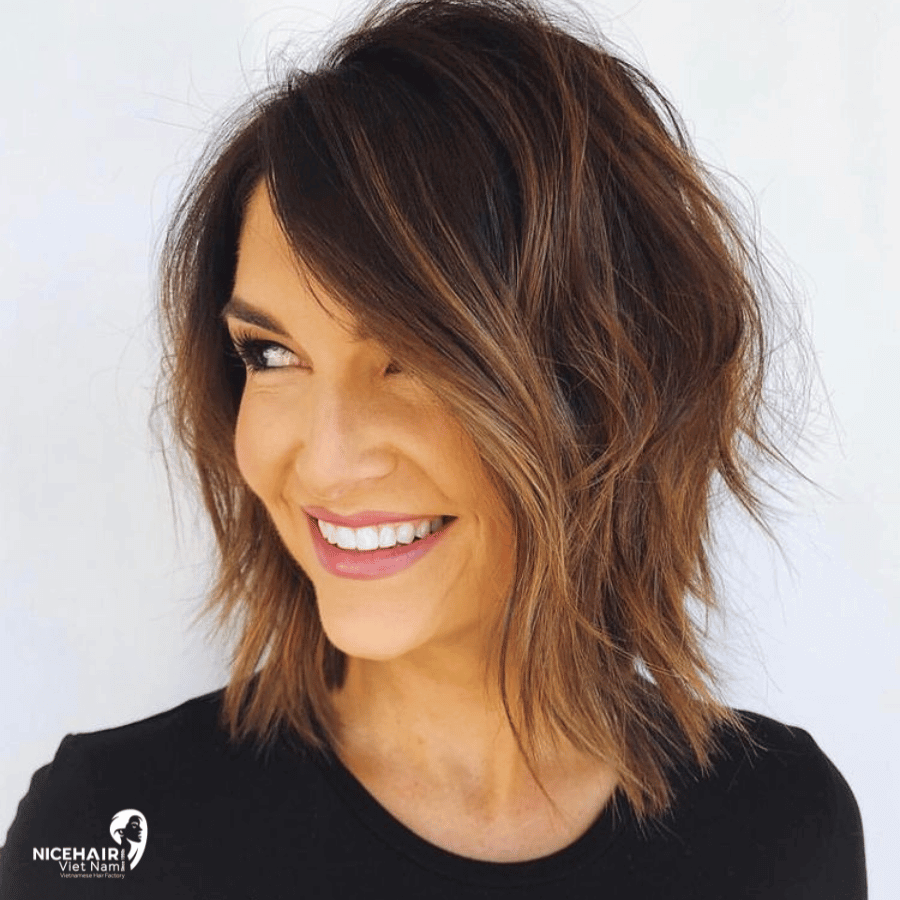
Allow your hair to air dry
When it comes to caring for your colored hair, it’s important to be mindful of the heat you expose it to. Heat can have detrimental effects on the health of your hair leading to damage such as cracking and brittleness. One particular source of heat that can cause harm is the blow dryer. The intense heat generated by blow drying can strip away moisture from your hair, leaving it dry and fragile. This increased brittleness can also accelerate the fading of dye pigment from the hair follicle. To minimize these risks, it’s advisable to limit the use of heat styling tools, especially when it comes to drying your hair.
Instead of relying on heat to dry your hair consider towel drying as an alternative. After washing your hair, gently pat it with a soft towel to remove excess moisture. This method helps to reduce the exposure of your hair to excessive heat, thereby lowering the risk of damage and preserving its natural moisture balance. By allowing your hair to air dry naturally after towel drying, you embrace a gentler drying process that is more favorable for the health of your hair. Air drying allows your hair to retain its natural oils, preventing excessive dryness and brittleness. Moreover, this method reduces the stress and strain caused by high temperatures emitted by blow dryers, promoting the overall well being of your hair.
However, there may be occasions when using heat styling tools becomes necessary. In such instances, it becomes crucial to apply a heat protectant product before styling. This protective layer acts as a barrier between your hair and the direct heat, minimizing the potential damage and preserving the integrity of your strands. By incorporating a heat protectant into your styling routine, you provide an added level of protection to your colored hair, reducing the risk of heat related damage.
Avoid sleeping with wet hair
It is important to ensure that your hair is adequately dry before you go to bed. Sleeping with wet hair can result in breakage and damage to your hair strands. If you have long hair and find yourself short on time to fully dry it, a good alternative is to braid your hair before bedtime. Braiding helps to contain your hair without placing excessive tension on it, reducing the risk of breakage during the night as you move and shift in your sleep.
You minimize the chances of hair fibers rubbing against your pillowcase and causing friction, which can lead to damage and breakage by allowing your hair to dry completely before going to bed. Wet hair is more vulnerable and prone to breakage, especially when exposed to external pressures during sleep.
When opting for a braid, it is advisable to choose a loose and gentle style that won’t strain or tug on your hair. Avoid pulling your hair into tight ponytails or buns, as this can place undue stress on the hair follicles, potentially leading to breakage and damage. The goal is to provide a protective and comfortable environment for your hair to rest and rejuvenate during the night.
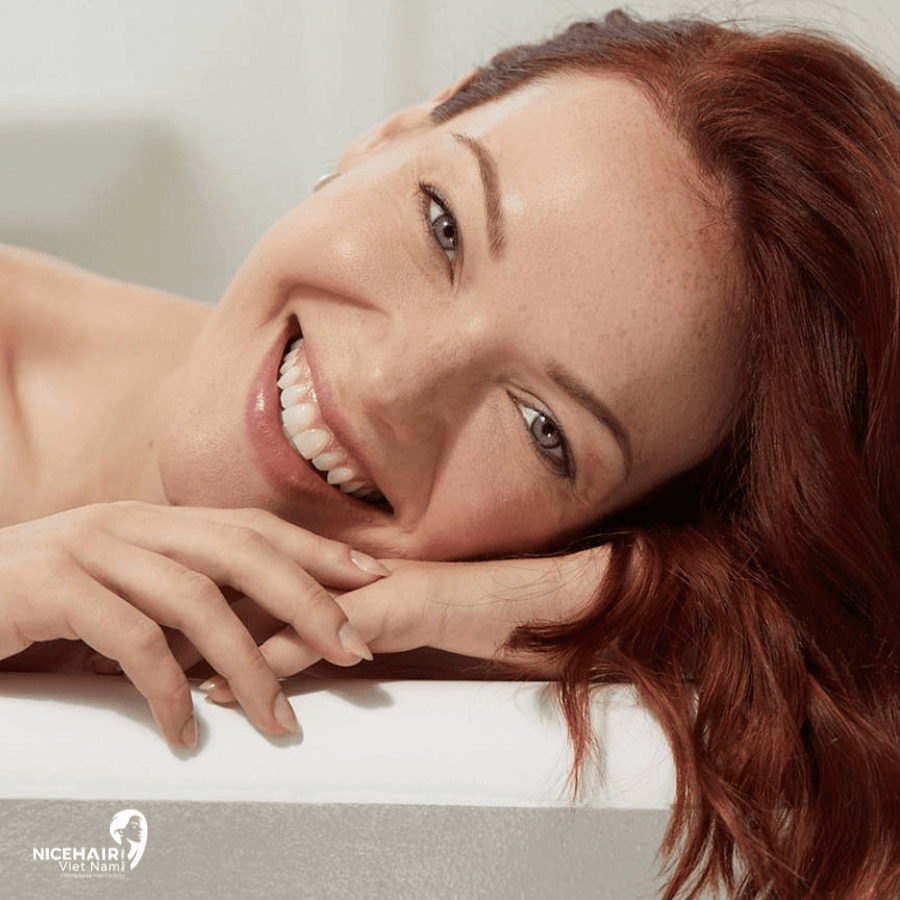
Exposure to sunlight can accelerate the fading of color treated hair
In order to safeguard your colored hair, it is of utmost importance to protect it from the damaging effects of UV rays and excessive sunlight. When you anticipate spending a prolonged time outdoors, it is highly recommended to shield your hair by wearing a hat or other forms of protective headgear. This proactive measure serves to minimize direct sun exposure and its potential harm to your precious strands.
The UV rays emitted by the sun can have adverse consequences on colored hair, leading to dryness and breakage. Extended periods of sun exposure can deplete the natural moisture of your hair, rendering it brittle and susceptible to damage. Consequently, the vibrant color pigments in your hair may gradually fade or leak from the hair strands, compromising the overall vibrancy and longevity of your color treated locks. By employing headgear or hats, you create a physical barrier that effectively shields your hair from the sun’s rays, significantly reducing the risk of damage. This protective measure helps to maintain the integrity of your colored hair by preventing excessive dryness, brittleness, and color fading.
In addition to donning protective headgear, it is also advantageous to incorporate other sun protection strategies into your hair care routine. Consider utilizing hair care products that offer UV protection such as leave in conditioners or styling products infused with built in sunscreens. These specialized products serve as an additional line of defense against the harmful effects of UV rays, effectively preserving the health and vibrancy of your hair color. By incorporating such sun protection measures, you proactively safeguard your colored hair, ensuring it remains vibrant, healthy, and radiant for an extended period of time.
Remember, protecting your hair from UV rays and excessive sunlight is an essential aspect of maintaining the beauty and longevity of your colored hair. By implementing these simple yet effective strategies, you can confidently embrace the outdoors while keeping your hair vibrant and healthy.
Replace your regular conditioner with nourishing hair masks
Incorporate a weekly routine of using a specialized hair mask formulated specifically for color treated hair. These hair masks are designed to provide deep nourishment and restore the natural protective barrier of your hair follicles. It is crucial to select masks that are free of sulfates, as sulfates can strip away moisture and potentially fade your hair color.
To effectively utilize a hair mask, begin by dampening your hair slightly. Then, generously apply the hair mask product, ensuring to distribute it evenly from roots to ends. Once applied, gently massage the mask into your hair to enhance its absorption. To maximize the benefits of the mask, cover your hair with a shower cap, allowing the product to penetrate deeply into the hair strands.
Each hair mask will have specific instructions regarding the recommended duration to leave the mask on. Respect this allotted time, allowing the mask to work its magic and impart its nourishing properties to your hair. During this time, you can indulge in self care activities or relax and unwind.
After the designated time has passed, rinse your hair thoroughly to remove the hair mask. Take care to rinse until the water runs clear, ensuring that no residue remains. The result will be beautifully conditioned hair that is fortified against fading and damage.
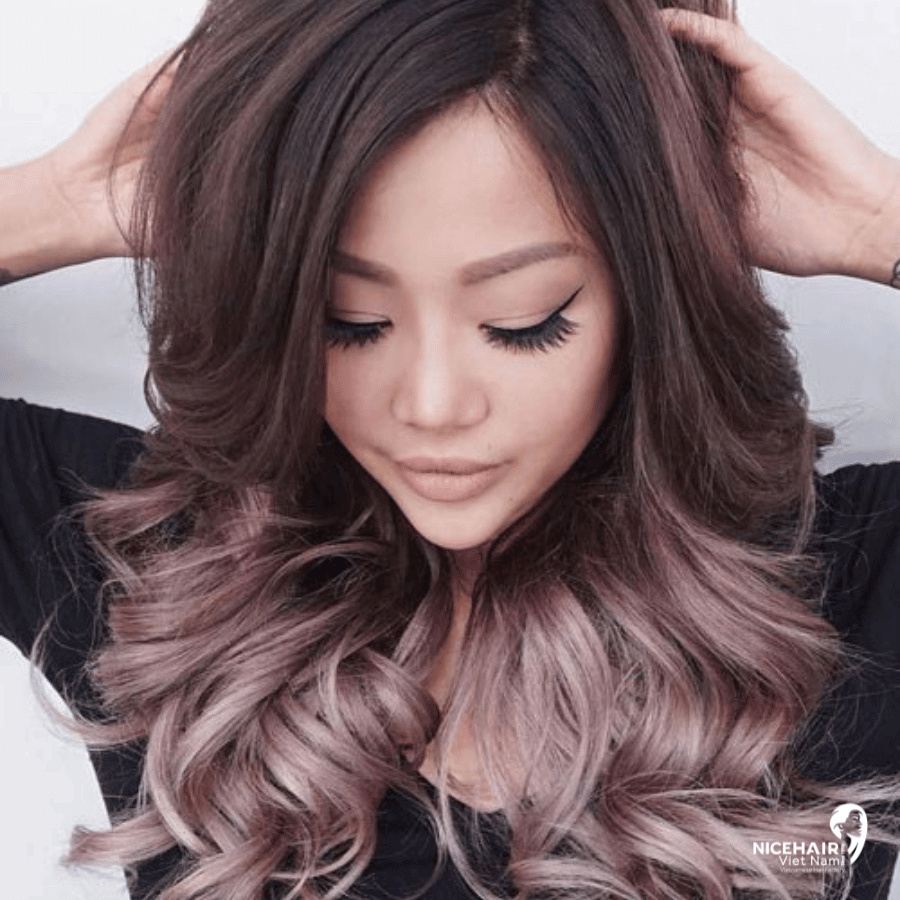
Minimize or completely avoid the use of heat styling tools on your hair
It is highly recommended to avoid heat styling your color treated hair, as excessive use of curling irons, flat irons or crimpers can lead to significant color fading.
Before subjecting your hair to any heat styling tools, it is essential to apply a heat protectant product specifically designed for color treated hair. Heat styling exposes your hair to high temperatures, which can result in dehydration and damage to the hair strands. The increased dryness and damage compromise the integrity of the color treated hair, causing the pigment to escape from the hair strands and fade over time. By using a heat protectant, you create a barrier that reduces moisture loss and shields the hair from the damaging effects of humidity and high temperatures.
Ideally, minimizing or completely eliminating the use of hot styling tools is the best approach for maintaining the vibrancy and longevity of your color treated hair. By embracing alternative styling methods that do not rely on heat, such as air drying, braiding, or using heatless styling techniques, you can significantly reduce the risk of color fading and damage caused by heat styling.
Incorporating heat free styling options into your hair care routine not only helps preserve the integrity of your color treated hair but also promotes its overall health and vitality. By prioritizing gentle styling techniques and avoiding excessive heat exposure, you can enjoy beautiful, long-lasting color while keeping your hair in its best condition.
Steer clear of styling products that contain harsh chemicals
If you have recently undergone a hair coloring treatment, it is advisable to steer clear of chemical laden products. Certain hair sprays and styling products often contain alcohol, which can have detrimental effects on colored hair. Alcohol has a tendency to strip the hair of its natural moisture, resulting in dryness and potential damage. Additionally, the chemical components present in these products can disrupt the molecular structure of the hair’s cuticle, leading to the escape of pigment from the hair cortex.
To safeguard the vibrancy and longevity of your colored hair, it is recommended to opt for alternative hair products that are free from harsh chemicals and alcohol. Look for hair sprays, gels, and styling products that are specifically formulated for color-treated hair. These products are designed to provide nourishment, hold, and style without compromising the integrity of your hair color. By selecting chemical free alternatives, you can maintain the moisture balance of your hair, minimize the risk of color fading, and ensure the overall health and appearance of your colored hair.
Being mindful of the products you use and their potential effects on your colored hair is a key step in preserving the beauty and integrity of your hair color. By choosing gentle, chemical free options, you can maintain the vibrancy and longevity of your hair color while keeping your hair healthy, nourished, and full of life.
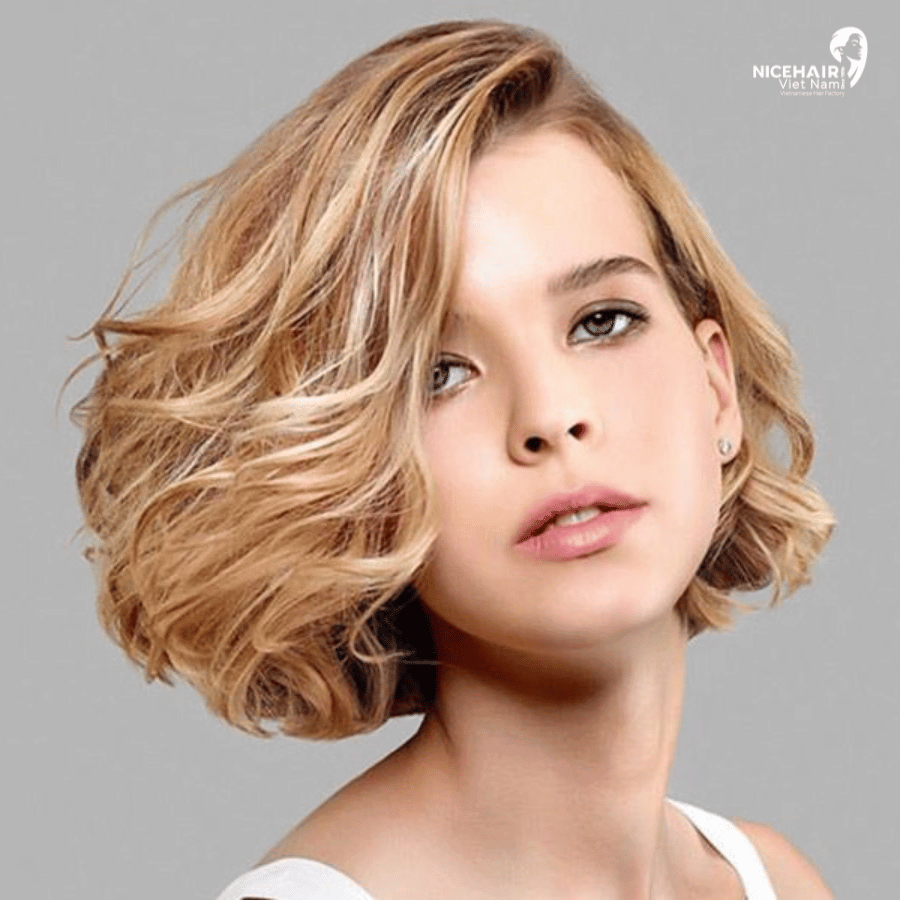
Refrain from exposing your colored hair to chlorine
The presence of chlorine in swimming pools can have a detrimental impact on hair that has been color treated. Particularly for individuals with blonde hair, exposure to chlorine can result in an unwanted greenish tint. However, it is important to note that chlorine can also affect hair of other colors. While completely avoiding swimming might not always be feasible, there are precautionary measures you can take to minimize the damage caused by chlorine.
Before entering the pool, it is advisable to wet your hair thoroughly. By saturating your hair with fresh water beforehand, you create a barrier that limits the absorption of chlorinated water. Additionally, applying a leave-in conditioner or coconut oil to your hair acts as an additional protective layer, reducing the hair’s exposure to chlorine and minimizing its negative effects. Another option is to wear a swimming cap, which provides a physical barrier between your hair and the pool water, safeguarding your color-treated strands.
After you have finished swimming, it is essential to promptly cleanse your hair with a clarifying shampoo specifically designed to eliminate chlorine. Gently massage the shampoo into your hair and scalp, ensuring thorough coverage, and then rinse it out. This clarifying shampoo helps remove any residual chlorine that may have clung to your hair, preventing further damage and discoloration.
Make it a habit to schedule regular hair trims
After coloring your hair, it is crucial to prioritize regular hair trims ideally every two weeks. This practice plays a vital role in preventing and eliminating split ends. Within the hair structure, the cortex serves as the repository for the pigment derived from the coloring treatment. Comprised of long coils of proteins known as keratin, the strength of these coils directly impacts the overall strength of your hair.
Over time, exposure to various factors such as sunlight, chlorine or chemicals, excessive heat, and environmental elements can gradually wear down your hair. As a consequence, the protective layers of the hair strands can become compromised, leading to the exposure of the cortex. When the keratin coils start to unravel, it results in the formation of split ends. Unfortunately, once split ends emerge, they tend to progress and spread further along the length of the hair strands.
Adhering to regular hair trims, you effectively eliminate split ends and contribute to the overall health and integrity of your hair. Trimming the hair removes the damaged ends, preventing the splitting from progressing further. In doing so, you create an environment that promotes the well being of your hair and enhances the retention of the synthetic pigment introduced during the coloring process.
Make it a habit to schedule regular appointments with your hairstylist or salon to trim your hair every two weeks. This proactive approach ensures that split ends are promptly addressed, keeping your hair in optimal condition and preserving the vibrant color you desire. By prioritizing regular trims, you actively contribute to the long term health and vitality of your hair, allowing it to maintain its lustrous appearance and effectively retain the synthetic pigment for an extended period.
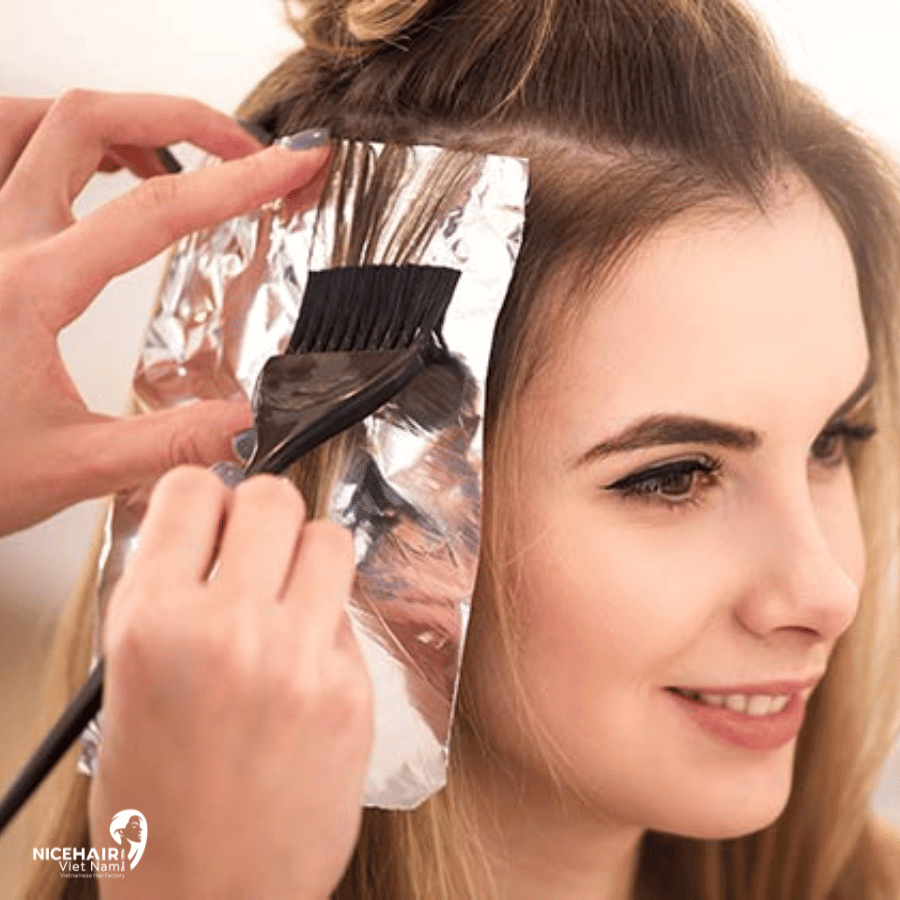
Quality of your hair is influenced by the type of diet you maintain
Including essential nutrients in your diet, such as vitamin C, vitamin A, biotin, and iron, is crucial for promoting a healthy scalp and nourishing your hair follicles, ultimately leading to shiny and vibrant hair.
Vitamin C plays a vital role in maintaining the proper functioning of blood vessels in the scalp. This essential vitamin, abundantly found in citrus fruits, bell peppers, and leafy greens, also aids in the absorption of iron by the body. Iron is particularly important as it supports the transportation of oxygen to cells throughout the body, including the scalp. Insufficient iron levels can sometimes result in hair loss. To ensure an adequate intake of iron, incorporate foods like meat, fish, egg whites, leafy greens, and low-fat cheese into your diet. Biotin – a type of B vitamin, contributes to the strength and glossiness of your hair. Including biotin rich foods such as carrots, egg yolks, and salmon in your diet can significantly improve the overall health of your hair, skin, and nails.
Vitamin A known for its reparative properties, plays a pivotal role in addressing dry and brittle hair concerns. Foods such as spinach, carrots, apricots, red peppers, and sweet potatoes are excellent sources of vitamin A. This essential nutrient restores shine and luster to dull hair while providing much-needed moisture to the scalp.
Ensuring proper moisture for your natural hair is essential and should not be neglected
When it comes to caring for your naturally curly hair, especially after coloring, it’s important to recognize its unique needs and take extra measures to maintain its health and beauty. Naturally curly hair tends to be more prone to damage and dryness, which means that a consistent and nourishing hair care routine is essential. To ensure that your colored curls stay vibrant and moisturized, it’s crucial to continue with your regular conditioning and moisturizing regimen. This involves using products specifically formulated for curly hair that provide deep hydration and nourishment. Look for products that are free from sulfates, as these harsh detergents can strip away the natural oils and color molecules from your hair, leaving it dry and faded.
In addition to your regular routine, incorporating deep conditioning treatments into your hair care regimen can work wonders for your colored curls. Treat your hair to weekly or bi-weekly deep conditioning masks or treatments that are designed to replenish moisture, repair damage, and restore elasticity. These treatments help to seal in moisture, enhance color retention, and prevent breakage, leaving your curls soft, bouncy, and full of life. To provide further protection for your colored curls, consider incorporating protective hairstyles into your styling routine. Styles like braids, twists, or updos can help to minimize manipulation and reduce the exposure of your hair to external factors that can cause damage, such as heat, friction, and environmental pollutants. By embracing these protective styles, you not only safeguard your hair’s color but also promote its overall health and length retention.
Remember to maintain a healthy diet rich in vitamins and nutrients that support hair health. Foods like fruits, vegetables, lean proteins, and healthy fats provide essential vitamins and minerals, such as vitamin C, biotin, and omega-3 fatty acids, which contribute to the strength, shine, and vitality of your hair.
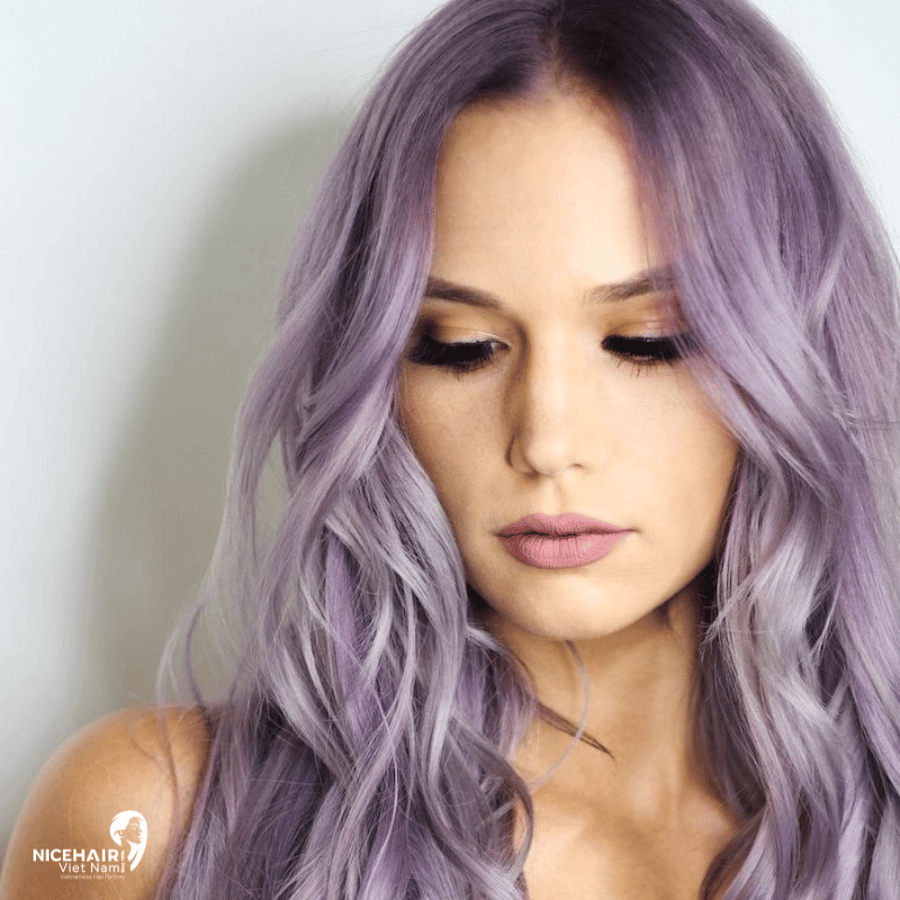
Occasionally refrain from coloring your hair to provide it with a much-needed respite
Each time you subject your hair to synthetic dyes, the outer follicle of your hair shaft opens up. This process is particularly necessary when transforming dark hair into vibrant shades like silver, blue, green, pink, or purple, as it typically involves bleaching the hair beforehand. However, it’s important to consider giving your hair intermittent breaks from coloring to allow it ample time to repair and strengthen itself. By following the other steps outlined in this list, you can further support the health and resilience of your hair during these breaks.
Taking periodic breaks from hair coloring is beneficial for several reasons. Firstly, it allows the hair follicles to recover from the chemical processes involved in coloring, reducing the risk of damage and breakage. By abstaining from synthetic dyes, you give your hair the opportunity to repair itself and restore its natural strength and vitality. During these breaks, it’s crucial to focus on nourishing and maintaining your hair’s overall health. Implement a comprehensive hair care routine that includes regular deep conditioning treatments, moisturizing masks, and the use of sulfate-free products to cleanse your hair. These practices help replenish moisture, enhance elasticity, and fortify the hair strands, promoting optimal hair health.
In addition to providing a chance for repair, taking breaks from hair coloring also allows you to explore and appreciate your hair’s natural beauty. Embrace your hair’s natural color and texture, and experiment with different styles and techniques that highlight its unique characteristics. This break from regular coloring can be a period of self-discovery and embracing your hair’s inherent attributes. Furthermore, giving your hair intermittent breaks from synthetic dyes can save you time, money, and effort. Regular salon visits for touch-ups and color maintenance can be time consuming and costly. By taking a break, you simplify your hair care routine and allocate your resources towards nourishing and preserving the health of your hair.
During these coloring breaks, it’s essential to prioritize overall hair health. Maintain a balanced diet, rich in vitamins and minerals, to support strong and vibrant hair growth. Stay hydrated and minimize exposure to damaging factors such as excessive heat styling and environmental pollutants. These lifestyle choices contribute to the overall well being of your hair.
Expand your knowledge in the field of cosmetology and hair coloring
Cosmetology and hair styling are fascinating fields that encompass a wide range of techniques, skills, and knowledge. Whether you have a passion for beauty, enjoy experimenting with different hairstyles, or aspire to pursue a career in the beauty industry, learning more about cosmetology and hair styling can open up a world of opportunities.
Cosmetology is the study and practice of various beauty treatments, including hair, skin, nails, and makeup. It involves understanding the science behind beauty, the anatomy of hair and skin, as well as mastering the art of applying different cosmetic products and techniques. Cosmetologists are professionals who are trained to provide a wide array of beauty services, such as hair cutting, coloring, styling, facial treatments, manicures, pedicures, and more.
Hair coloring on the other hand, focuses specifically on the art of creating beautiful and unique hairstyles. It involves manipulating and arranging the hair in different ways to achieve desired looks and enhance one’s appearance. Hair stylists possess a deep understanding of various hair types, textures, and structures, allowing them to create stunning hairstyles that complement their clients’ features and personal style. If you’re interested in learning more about cosmetology and hair styling, there are numerous avenues you can explore. One option is to enroll in a reputable cosmetology school or institute. These institutions offer comprehensive training programs that cover both theoretical knowledge and practical hands on experience. You’ll learn about the fundamentals of cosmetology, including hair care and treatment, chemical processes, sanitation practices, client consultation, and salon management.
In addition to formal education, there are plenty of resources available to expand your knowledge in cosmetology and hair styling. Online courses, workshops, and tutorials provide convenient and accessible platforms to learn new techniques, keep up with the latest trends, and refine your skills. Many beauty brands and professional organizations also offer educational materials, webinars, and conferences that delve deeper into specific areas of cosmetology and hair styling. Networking with professionals in the industry is another valuable way to learn and gain insights into the world of cosmetology and hair styling. Attending industry events, joining online communities, and connecting with experienced stylists and cosmetologists can provide valuable mentorship and guidance. These interactions can offer opportunities to learn from seasoned experts, exchange ideas, and stay informed about emerging trends and techniques.
Keeping up with industry publications, magazines, and online platforms dedicated to beauty and hair styling will keep you informed about the latest industry news, product releases, and innovative techniques. Subscribing to beauty blogs, following influential stylists and cosmetologists on social media, and watching video tutorials can also provide inspiration and valuable educational content. As you delve deeper into the world of cosmetology and hair styling, remember that practice is essential. Experimenting with different hair textures, practicing various styling techniques, and continuously honing your skills will help you build confidence and proficiency in this creative field. Consider practicing on friends and family members, offering your services at local events, or volunteering at salons to gain practical experience and receive feedback.
Learning more about cosmetology and hair styling is an exciting journey that can lead to a rewarding and fulfilling career. Embrace the opportunity to expand your knowledge, refine your skills, and explore your creativity. Whether you aspire to become a professional stylist, offer beauty services as a side hustle, or simply enhance your personal styling skills, the world of cosmetology and hair styling is rich with possibilities waiting to be explored.

Taking proper care of your hair after coloring is crucial for maintaining its vibrancy and health. By following the tips and techniques discussed in this article, you can ensure that your colored hair remains beautiful and long-lasting. Remember to use color safe products, deep condition regularly, protect your hair from heat and UV rays, and maintain a balanced diet. With consistent care, your colored hair will continue to shine and make you feel confident.

